Pouring the lead centerboard weight
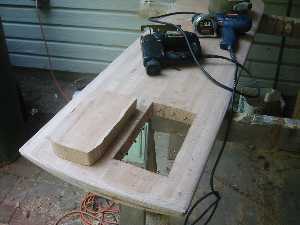
As specified in the plans the centerboard requires a 30 lb lead weight to be embedded. This is in order for the centerboard to actually sink when lowered for sailing. Here I've cut out the hole and put screws in the sides as anchors.
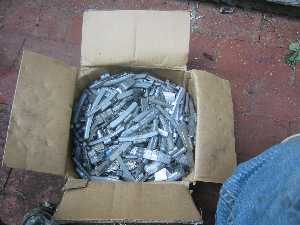
I went to a local tire store and obtained these for the asking. The guy said, "just take this on out of here. I don't want my boss to see this!" This box contains about 50 lbs of lead tire weights.
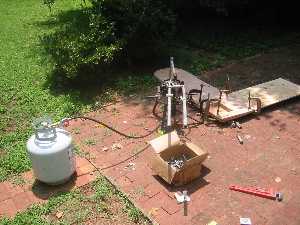
Here's my lead casting setup. I got a full cylender of propane and a turkey fryer burner from Walmart. I used galvanized pipes and fittings to hold the pan. Next time I will have a proper crucible holder.
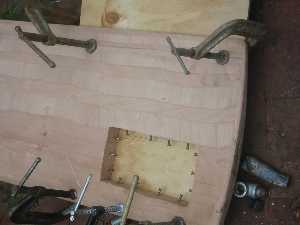
The plywood is clamped to the side of the centerboard to seel the hole. It is leveled and ready to pour.
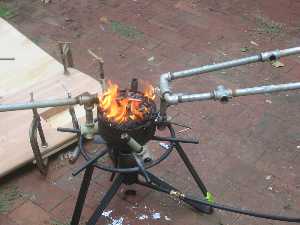
I lit the burner off and turned up the heat. The pan initially held about 15lbs of the weights. As the lead started melting the pile went down. I gradually added more weights to the top. I don't ever want to put a cold tire weight directly in molten lead. Any moisture on it would explode, splattering lead everywhere. Instead I want to gradually heat the weight to drive off any moisture, then let it melt. By putting new weights on top of ones already there but not yet melted I avoided any problems. The flames are from the crud that accumulates on the weights as they were on the road.
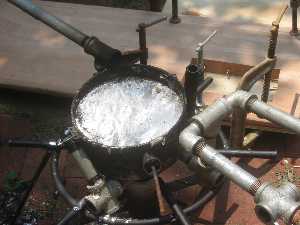
After about 1/2 hour the flames were gone and the lead was melted. I used a spatula to skim the steel inserts and dross off. I will never use this particular spatula for cooking again. The lead should be just hot enough to be molten. Any hotter and it starts giving off hazardous fumes.
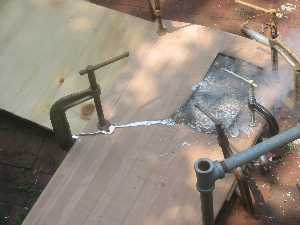
The hardest part was pouring the lead and not having it spill everywhere. As soon as I had filled the hole some of it spilled out of a corner. Also the lead boiled like a witches cauldron. This is because of off gassing from the wood as it got scorched. Also I made sure to keep upwind of any smoke and fumes. After a few minutes it settled down. I picked up any spill puddles which had hardened and dropped them back in the hole. The lead which had just cooled enough to solidify was nonetheless very soft.
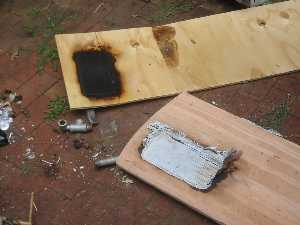
About one hour later rain threatened. I checked that the pour was good and solid, then took everything apart. The lead probably scorched the sides of the hole like it did this plywood. It charred about 1/16" of wood. The centerboard weighed double what it did before.
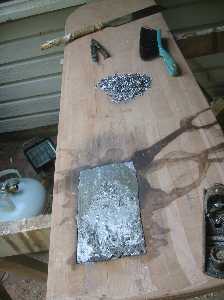
Here I've trimmed up the lead. It protruded a bit past the surface of the centerboard. I used a hand plane with the blade canted to one side to smooth it out. It took about two hours for the pour to get cool to the touch. I saved all the valuable lead sprues and shavings and left over weights for a future project.
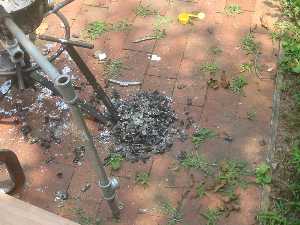
What a mess to clean up.